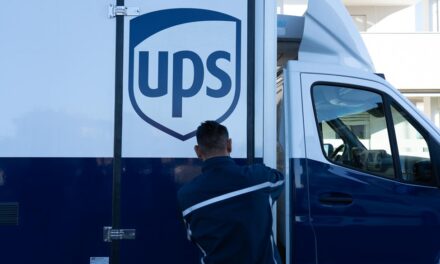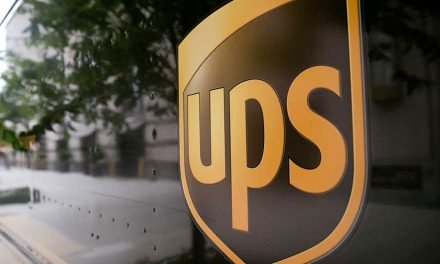
UPS: E-commerce masking concerns over B2B slowdown
Today’s Q2 results from UPS reveal some strength in the company’s domestic US operations, but under the glossy veneer of e-commerce growth, executives have big concerns about B2B trends, writes James Cartledge In a fairly challenging second quarter of the year for UPS, the company said today that the main “culprit” was the international side of the business. The US domestic segment saw a 14% increase in operating profit with package volumes growing by 3.5% year-on-year. Volumes outside the US were down 3.2%.
While on the surface, the company’s domestic US performance boosted its Q2 results overall, much of the growth was in e-commerce, which is generally less profitable than business-to-business activity.
Talking to analysts today, CEO Scott Davis and CFO Kurt Kuehn suggested the continuing boom in Internet shopping within the United States has obscured more troubling trends in the B2B side of UPS going forward, tied to weakness in the US economy.
Kuehn said: “In the second quarter, international has been the biggest culprit, but going forward the weaknesses in the domestic demand is our biggest concern.”
The situation in the US has taken a particularly negative turn in the last couple of months, the UPS executives said.
Davis said growth in retail is currently at the lowest levels since 2009, manufacturing is slowing, and in general customers were “nervous”. Both inventory levels and recruitment within US businesses were at a very low level, which did not bode well for the nation’s economy, he suggested.
The UPS CEO said he believed general forecasts around at the moment for growth in the rest of the year were too high. Davis said he believed the US Congress was “one deficit ceiling bill away from getting the economy going again”, but as Capitol Hill is bogged down in the politics of a Presidential election campaign, he said things were not looking positive from that direction.
“It’s hard for me to see this being turned round until we get some decisions from Washington,” he said. “It’s going to get tougher before it gets better.”
Ground package volumes have increased 3% in the US in the last quarter, but there was a 25% increase in lightweight packages. As in the rest of the world, there is also a shift of customers towards cheaper shipping products, although there has been some growth in next day volumes and letters.
Although overall today, UPS announced US domestic operating profits up 12% over the prior-year period, Kuehn said the B2B situation and economic outlook meant “concerning trends” for the market.
“We are anticipating some decline in premium product growth, and B2B is expected to deteriorate going forward,” said the UPS CFO. “Growth is mainly in B2C.”
Davis said his company can adjust quickly to the changes in the market, although Kuehn suggested a “recalibration” of operations rather than a full restructuring of the network was needed.
SMEs and ecommerce
As well as taking out more costs where possible to respond to the trends, Davis said there needed to be more effort on boosting revenues, and in particular identified a need for more of a focus on SMEs.
“We need to focus on the middle market,” he said. “A lot of our growth has been from the larger companies. SMEs are suffering right now with all the uncertainties, but they still have shipping needs and we need to focus on them.”
UPS will be taking advantage of a decentralisation of its marketing operations, with marketing teams now working more within districts, closer to customers.
The company is not sitting back regarding its e-commerce opportunities either, continuing to press the case for its premium “UPS MyChoice” service among merchants and consumers. The service allows Internet shoppers to select narrower delivery windows than regular deliveries, and also to receive notifications of when deliveries will occur.
Kuehn said the service now had 1.5m members since its launch last year.
“Once people get used to the proactive notification, it’s a very well received service,” he said. “There’s also an increasing interest among high quality Internet shippers to encourage their customers into using it, because it avoids a lot of the ‘where-are-my-packages’ calls.”
Davis noted that the company’s ecommerce efforts is a global affair, and noted the continuing development of network technology following last year’s acquisition of Benelux-based ecommerce collection network Kiala, saying: “We’re excited about having the alternative collection options for our customers.”
International
Davis said the slowdown in the developed world was the key trend at a macro level, with demand for products in the US and Europe slowing, leading to the amount of exports from Asia to “fall off a cliff” in this quarter.
However, the UPS executives did suggest that intra-regional trading was relatively buoyant, with shipments within Europe and within Asia showing strength, although again there was a trade-down going on for customer moving away from more premium products to more economic alternatives.
Globally, UPS is continuing to realign its air networks to demand moving to ground transport, and today said a further 10% of the international air network capacity would be removed.
“It’s mainly a reduction in service frequency and flights,” he explained. “It means two or three flights at an airport rather than three or four.”
Strength within the European market underscores the continued interest within UPS to invest there, including its outstanding offer for rival TNT Express, which is current awaiting an extended EU antitrust investigation that could now take until November to complete.
In the second quarter, revenues were significantly affected by currency movement – around a 4.5 percentage point impact on international revenues. The situation could be to the advantage of UPS regarding its proposed $6bn offer for rival TNT Express, with currency movement in the last three months making the company around 10% cheaper in US dollars.
Regarding the TNT acquisition, the executives again confirmed their believe that the deal will be concluded in the fourth quarter of the year.
August will see UPS as official logistics partner of the London Olympics running the “biggest peacetime logistics exercise in history”, with expectations of delivering 30m items during the event which begins on Friday. However, with much of the delivery and logistics work provided mainly for the brand recognition and sponsorship opportunities, Davis said today that the event would not have much of an impact on the UPS results.
The third quarter is expected to be fairly “soft” for UPS, with share earnings set to suffer as a result, before profits pick up in the last quarter thanks in part to a number of planned product launches.












